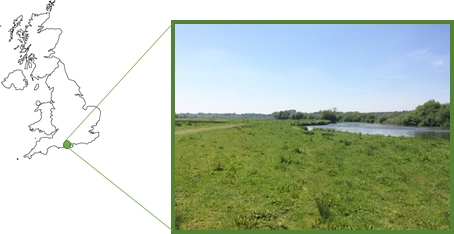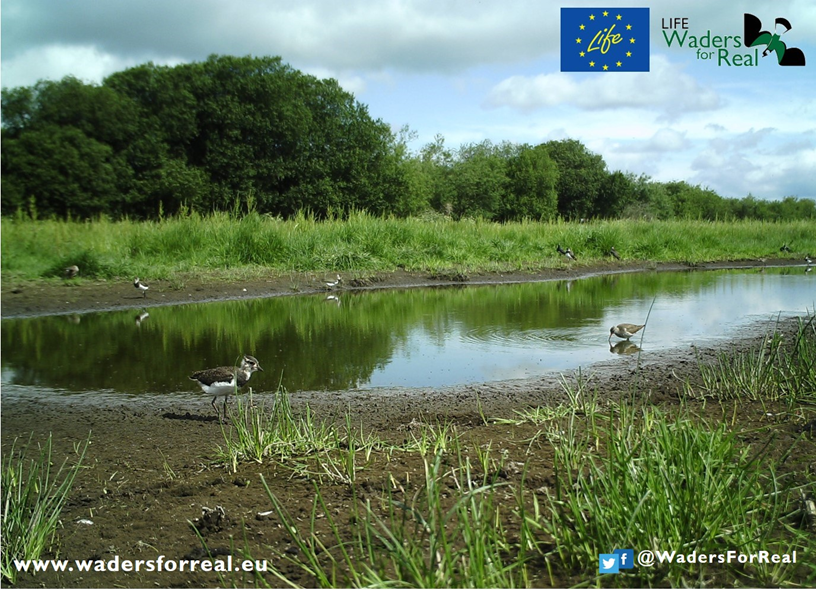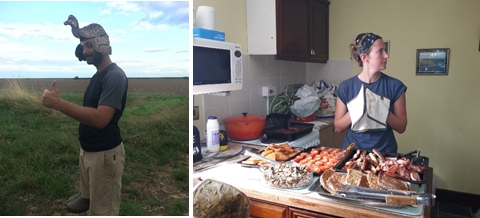At the Wash Wader Ringing Group, we are a varied and inclusive bunch with members from all walks of life. Indeed, it is the varied background, opinions and skills which this provides that makes the Group work so well. Though, all WWRG members have two things in common, everyone is a volunteer, and everyone shares a dedication to studying and conserving wading birds that use The Wash.
Though the majority are not professional biologists, some members are lucky enough to apply their passion for birds to their professional lives. We have scientists from RSPB, WWT, BTO, GWCT and other organisations who work throughout the UK. In many cases, WWRG fieldwork and discussions in down time stimulated the desire for a career in wader conservation in these members. Two examples of this are Lizzie Grayshon and Ryan Burrell, who both started with WWRG five years ago as fresh-faced recent ecology graduates and are now regulars on WWRG fieldwork and trainee cannon-net licence holders with the Group whilst being Wetland Ecologists running the LIFE Waders for Real project in the Avon Valley, Hampshire. Here they provide a short introduction to their project and how WWRG has influenced their careers.
The Avon Valley in Hampshire historically supported high densities of breeding waders. In common with other lowland river valleys in the UK and Europe, wader populations in the Avon Valley have declined since the mid-1980s with breeding Snipe disappearing alongside falls of 70% in Lapwing and 83% in Redshank populations.
In the face of local, national and international declines, conservation of these species is a priority, but in many lowland situations, reducing predator impacts and restoring habitats at a large enough scale is constrained by the landscape and private land ownership. The Waders for Real project funded by the EU LIFE+ programme and the GWCT, started in 2014, combing the efforts of a committed group of farmers, landowners and gamekeepers with advice, monitoring and habitat improvements from ecologists at GWCT, Sparsholt College and the public sector (Natural England, Environment Agency) in an attempt to find workable options for wader recovery in the farmed environment.

We know the declines shown by Lapwing and Redshank in the Avon Valley are driven by low breeding success, due to agricultural improvement and high levels of predation by generalist predators, like the Red Fox. Our approach has used “wader hotspots” focused on areas holding important remaining numbers of breeding waders and have each received intensive management, advice and monitoring targeted at increasing productivity, reducing predation and increasing breeding densities whilst maintaining farm profitability and operations.
In-field wet features provide optimum conditions for foraging breeding wader chicks, providing a rich source of invertebrates to eat and soft soil to facilitate probing. These mini-wetlands also host dragonflies, damselflies, molluscs and important wetland plants, as well as overwintering waders and waterfowl. So far, the project has created or restored 7.3 km of wet ditches and added 33 shallow scrapes, alongside providing advice to on grazing and mowing to create an optimum wader breeding habitat.

Waders select open landscapes for breeding, avoiding places where predators perch and hide. With the help of students from Sparsholt College, over 2 km of old fence lines and willow scrub have been removed alongside 125,885 m2 of wader breeding habitat protected from terrestrial predators by electric fencing. In addition, intensive camera trap monitoring has improved the efficiency of legal predator control already conducted on parts of the study area by private landowners to assist wader recovery.
Our results so far show breeding Redshank have increased from 19 pairs in 2015 to 33 pairs in 2018 and the Lapwing population has stabilised at 70 to 80 pairs. Snipe, a species which historically bred in the river valley but dropped in numbers since the early 1990s, have been heard drumming again in the water meadows.
Our project highlights the benefit of collaborative working by rural stakeholders and conservation organisations and we have our fingers crossed for the continuing positive turn in wader populations in the Avon Valley.
How has WWRG influenced us?
Though we were both interested in birds and conservation having worked as undergraduates on farmland bird tracking projects, starting with WWRG was a strong driver of both of our desires to work with waders and also in the development of our expertise in the field, be that ringing, colour-mark resighting or fieldwork management.
Both of us can remember how welcoming the Group was when we first started and were probably a hindrance more than a help (not that anyone would have ever said that to us though!) and now through the patience of, and training by, senior Group members, we are in a situation where we are training to be future Group leaders and able to pass on those skills to new members.
Working with WWRG has greatly improved our team management skills, especially when it comes to making quick decisions under pressure and prioritising tasks, which is often the nature of wader ringing work. It has influenced how we would go about setting up projects and data management, as the WWRG method of collecting and checking data is extremely thorough.
Group fieldwork provides a fantastic opportunity for networking as you get to meet many enthusiastic wader biologists from the UK and further afield. The WWRG membership has provided us with a network of wader specialists that cover pretty much any question we could have, from statistical analysis to the management of wet grassland, which has been an invaluable asset and something that we both draw on regularly in our professional work for LIFE Waders for Real.
Finally, spending hours with a group of committed and insightful wader enthusiasts with sometimes little to do, whilst waiting to make a catch or on nights of poor weather and no catching over a beer or wine, inevitably leads to conversations on a wide-range of topics related to wader conservation. We can both certainly say that these discussions have strongly influenced our thoughts, opinions and knowledge.
But it is not just us, it is humbling to think of the impact of WWRG on the careers of wader ecologists world-wide. Over the 60 years the Group has run (fantastic blog summary of our history here), it has always been happy to train other ringers and ornithologists, in both the UK and abroad. Many Group members have travelled around the world to help other ringers catch waders, sharing our knowledge and learning from them.
We are very thankful to the members of the Group for all their help over the years and look forward to another 60 years or more of the Group.
Oh, and it provided Ryan with an excellent hat… and made Lizzie able to cater for a small army…


